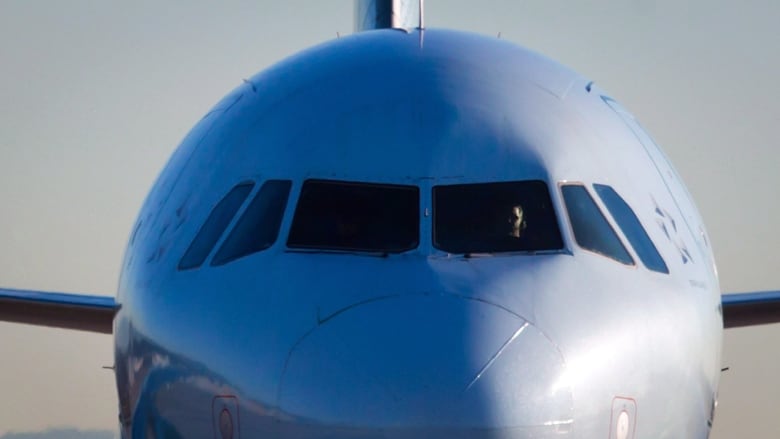Air Canada plane was 'a few feet' from 'worst crash in aviation history,' NTSB report says
'Over 1,000 people were at imminent risk of serious injury or death,' board member says of 2017 near-collision

A near-collision of airliners in San Francisco last year was a few feet from becoming the worst crash in aviation history and underscores the need for faster reporting of dangerous incidents before evidence is lost, U.S.safety officials say.
The U.S. National Transportation Safety Board issued a final report Thursday on the incident involving an Air Canada plane, which nearly crashed into planes lined up on the ground at San Francisco International Airport.
The pilots were slow to report the incident to superiors. By the time they did, the plane had made another flight and the cockpit voice recording of the close call was recorded over.
The NTSB says the recording could have helped investigators understand why the Air Canada pilots missed the runway and were about to land on a taxiway where four other planes were idling before they halted their landing.
The Air Canada jet swooped to just 18.2 metresabove the ground while passing over other planes packed with passengers waiting to take off shortly before midnight on July 7, 2017.
"Only a few feet of separation prevented this from possibly becoming the worst aviation accident in history," NTSBvice-chairman Bruce Landsberg said in a statement accompanying the report.
Over 1,000 people at risk
Another board member, Earl Weener, said the Air Canada plane came close to hitting another plane and colliding with several others.

"Over 1,000 people were at imminent risk of serious injury or death," he said.
The deadliest aviation accident occurred in 1977, when two Boeing 747 jets collided on a runway in Tenerife on the Canary Islands, leaving 583 people dead.
The Air Canada captain, identified in NTSB documents as Dimitrios Kisses, was supposed to report the San Francisco incident to the airline as soon as possible but didn't because he was "very tired" and it was late. He waited until the next day. By that time, the plane was used for another flight, and the audio loop on the cockpit voice recorder was taped over.
Watch video of the close call released by the NTSB:
The NTSB did not allege that Kisses and co-pilot Matthew Dampier deliberately delayed reporting the incident, but it did say investigators could have gained a better understanding of what the crew was doing before the close call.
The NTSB is considering recommending that cockpit recorders capture the last 25 hours of flying time, up from two hours under current rules.
Critical of reliance on self-reporting
Weener also criticized the airline industry's reliance on self-reporting of safety issues, saying the industry and the Federal Aviation Administration should consider stronger measures to intervene after a dangerous situation.
Weener noted that other pilots were alert enough to turn on lights to warn the off-course Air Canada jet. Yet once the danger passed, he said, they took no action to prompt "an intervention and evaluation of the Air Canada crew."
The five-member board determined last month that the incident was caused by the Air Canada pilots being confused because one of two parallel runways was closed that night. The closure was noted in a briefing to the pilots, and nine other planes had made routine landings after the runway was shut down.
1 controlleron duty
The safety board also criticized the FAA for having just one controller on duty at the time of the incident, and recommended better lighting to tell pilots when a runway is closed at night.
"It is noteworthy that the NTSB's recommendations were not directed at Air Canada specifically and address many areas for improvement," said Air Canada spokespersonPeter Fitzpatrick.
Air Canada told the NTSB it has taken steps to increase safety since the event, including emphasizing proper procedures for landing approaches and specific training to familiarize pilots with the San Francisco airport.
The NTSB recommended development of technology to better warn pilots and air traffic controllers when a plane appears to be off-course for a runway.













_(720p).jpg)


 OFFICIAL HD MUSIC VIDEO.jpg)
.jpg)



























































































